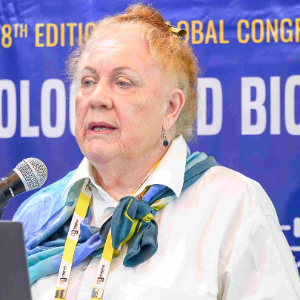Gene Stacking in Crops
Gene stacking is a method in plant biotechnology where multiple beneficial genes are introduced into a crop to provide resistance to various challenges, such as pests, diseases, and environmental stresses. This approach allows plants to possess combined traits, enhancing both productivity and resilience. For instance, stacked traits in corn or cotton may include herbicide tolerance along with insect resistance, enabling farmers to use fewer chemicals while protecting crop health. Gene stacking can be achieved through genetic engineering or selective breeding, offering a versatile solution for addressing the specific needs of different agricultural systems. This strategy is a cornerstone in modern crop improvement, aiming for sustainable agricultural practices and higher yield stability.

Mohammad Babadoost
University of Illinois, United States
Mary Cole
The University of Melbourne, Australia
Valasia Iakovoglou
UNESCO chair Con-E-Ect, International Hellenic University, Greece
Satya S S Narina
Virginia State University, United States
Sara Hailemariam
Purdue University, United States
Midhat Mahboob
Lincoln University, New Zealand


Title : Exploring the genetic diversity in tannin-rich forages to explain the large intra species variability in tannin content
Selina Sterup Moore, Aarhus University, Denmark
Title : Isolation and functional properties of biomolecules of plants and its application
Balagopalan Unni, GEMS Arts & Science College (Autonomous), India
Title : Primed for the future: PGPR and the promise of sustainable, heritable crop resilience
Prashant Singh, Banaras Hindu University (BHU), India
Title : Revealing allelic variations in candidate genes associated with grain yield under salinity stress between two contrasting rice genotypes
Nisha Sulari Kottearachchi, Wayamba University of Sri Lanka, Sri Lanka
Title : Adaptive strategies of Aristida L. species across ecological zones of Pakistan: Linking soil characteristics with morphological and physiological traits
Iram Ijaz, University of Agriculture Faisalabad Pakistan, Pakistan
Title : Ethnobotanical survey and abundance of weeds in selected Manihot esculenta (cassava) Crantz farms in Osun state, Nigeria
Dada Caleb Mayokun, University of Ibadan, Nigeria